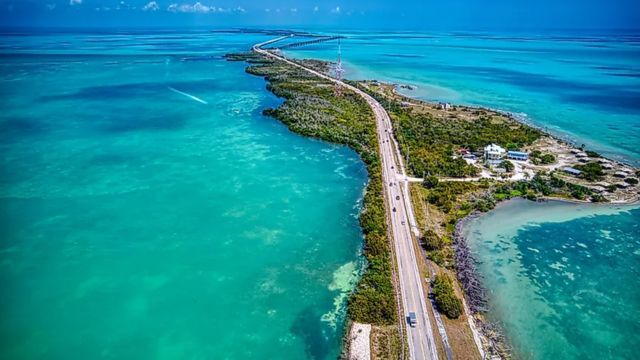Florida, affectionately dubbed “The Sunshine State,” is not just a beloved destination for its sunny beaches and vibrant culture; it stands as one of the most distinguishable peninsulas on the globe. Defined by water on three sides—with the Gulf of Mexico to the west, the Atlantic Ocean to the east, and the Straits of Florida to the south—while tethered to the mainland at its northern border shared with Alabama and Georgia, Florida embodies the quintessential characteristics of a peninsula. But how did this distinctive geographical feature come to be, and what historical significance does it hold?
The Geological Odyssey of Florida’s Peninsula
The story of Florida’s formation is as fascinating as it is complex, beginning some 530 million years ago on the Florida Platform. Originally part of the supercontinent Gondwanaland, Florida embarked on a geological journey, shaped by volcanic activity and other dynamic processes, leading to the formation of the Florida Plateau.
The onset of the Cenozoic Era saw Florida submerged beneath a shallow, warm sea, laying the groundwork for the state’s present-day flat landscapes and marine formations. Over millions of years, the peninsula as we know it emerged, framed by the Florida Escarpment to the west, a marker of the ancient carbonate platform that cradles the state.
Navigating Florida’s Diverse Landscapes
Today, Florida’s geography is as diverse as its history. Its borders, washed by the Atlantic and the Gulf, converge at the state’s southern tip into the Straits of Florida, a confluence of oceanic wonders. The state’s terrain is segmented into three physiographic provinces, each with its own unique characteristics:
- Gulf Coastal Lowlands: This western frontier transitions into coastal plains, marshes, and estuaries, offering some of the most picturesque beaches and a vibrant ecosystem supported by the Gulf’s proximity.
- Atlantic Coastal Lowlands: The eastern shores are adorned with coastal plains and barrier islands, fostering a diverse range of landscapes and habitats that add to Florida’s allure.
- Interior Highlands: Moving inland reveals a shift in elevation and topography, with rolling hills and elevated plains influencing the local biodiversity and weather patterns.
Florida’s Unique Natural Features
Among Florida’s geological marvels are the Florida Keys, a stunning coral cay archipelago that stretches from the state’s southern tip. This island chain is celebrated for its rich marine life and vibrant coral reefs. Equally significant is the Everglades, a sprawling subtropical wetland in the south, where sawgrass marshes and a plethora of species find sanctuary.
A Rich Tapestry of History
Florida’s peninsula has been a stage for human history for approximately 14,000 years, beginning with the Paleo-Indians and evolving through European exploration and colonization. It was Juan Ponce de Leon who, in the early 16th century, claimed the land for Spain, naming it La Florida. The state’s strategic position also made it the battleground for the extensive Seminole Wars and a crucial point for Spain’s Treasure Fleet, highlighting its historical and strategic importance.
Beyond Geography: Florida’s Ecological Significance
The peninsula’s shape contributes to the “peninsula effect,” a phenomenon where biodiversity tends to decrease from the base to the tip of a landmass. Florida showcases this pattern, with areas like the Lake Wales Ridge and Brooksville Ridge illustrating the state’s rich biodiversity. This biodiversity, coupled with the state’s unique ecosystems, underscores the importance of preserving Florida’s natural heritage, especially in the face of climate change challenges.
In essence, Florida’s status as a peninsula is just the beginning of its story. Beyond its geographical definition lies a rich tapestry of history, ecology, and culture, making it a land shaped by time, tide, and human endeavor.






